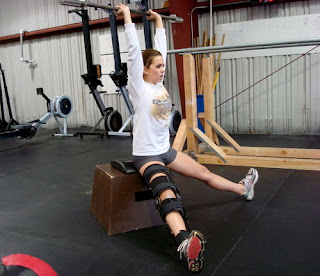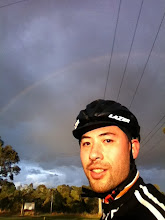I am an inconsiderate cyclist. As a matter of fact, according to a fellow cyclist, I'm a" f#@king idiot!"
I am a vocal critic of drivers in Melbourne who disregard the safety of cyclists with their dangerous driving and thoughtless actions. I can't count the number of times I've been in danger of being run over, clipped by an opened car door, or abused by irate drivers for no reason. I have blogged about how much it annoys me, and have bored many a person with my rants about the aggressive attitude that Australian drivers have towards cyclists.
So it is with great shame that I admit that on Monday I did the wrong thing whilst riding to work on Collins Street and almost ran over a pedestrian. I had just swerved around a double parked taxi and then evaded an opened SUV drivers door, when I came to a pedestrian crossing at on of the new tram stops near Exhibition street. For whatever reason, I didn't stop at the crossing, despite the fact that a lady had stepped out onto the marked crossing and was beginning to cross. It wasn't a conscious decision to go through, more a combination of too much speed and not enough attention to what was happening around me. Realistically, I was nowhere near hitting her, but that was more luck than anything else. As soon as I was through the crossing, I instantly felt guilty, and was not surprised to have another cyclist pull up next to me and begin to berate me for my dangerous riding.
At the time, I wasn't very receptive to this guy's delivery, as he opened with the line "you're a f#$king idiot!" and then proceeded to follow this up with quite a few other choice thoughts on how dangerous it was to ride through a pedestrian crossing. In hindsight though, he was spot on.
We cyclists can't complain about the poor driving of car owners, and then continue to flout the road rules, and even endanger pedestrians through our behaviour. It not only makes the roads more hazardous for all of us, but gives motorists a "reason" to hate us even more than they seem to.
So I've learnt my lesson. From now on, I'll slow down in the city, ensure I'm paying attention, and follow all of the road rules. It'd be great if all of the other cyclists making the perilous commute would do the same. Ride safe and look after yourselves!
I am a vocal critic of drivers in Melbourne who disregard the safety of cyclists with their dangerous driving and thoughtless actions. I can't count the number of times I've been in danger of being run over, clipped by an opened car door, or abused by irate drivers for no reason. I have blogged about how much it annoys me, and have bored many a person with my rants about the aggressive attitude that Australian drivers have towards cyclists.
So it is with great shame that I admit that on Monday I did the wrong thing whilst riding to work on Collins Street and almost ran over a pedestrian. I had just swerved around a double parked taxi and then evaded an opened SUV drivers door, when I came to a pedestrian crossing at on of the new tram stops near Exhibition street. For whatever reason, I didn't stop at the crossing, despite the fact that a lady had stepped out onto the marked crossing and was beginning to cross. It wasn't a conscious decision to go through, more a combination of too much speed and not enough attention to what was happening around me. Realistically, I was nowhere near hitting her, but that was more luck than anything else. As soon as I was through the crossing, I instantly felt guilty, and was not surprised to have another cyclist pull up next to me and begin to berate me for my dangerous riding.
At the time, I wasn't very receptive to this guy's delivery, as he opened with the line "you're a f#$king idiot!" and then proceeded to follow this up with quite a few other choice thoughts on how dangerous it was to ride through a pedestrian crossing. In hindsight though, he was spot on.
We cyclists can't complain about the poor driving of car owners, and then continue to flout the road rules, and even endanger pedestrians through our behaviour. It not only makes the roads more hazardous for all of us, but gives motorists a "reason" to hate us even more than they seem to.
So I've learnt my lesson. From now on, I'll slow down in the city, ensure I'm paying attention, and follow all of the road rules. It'd be great if all of the other cyclists making the perilous commute would do the same. Ride safe and look after yourselves!

























